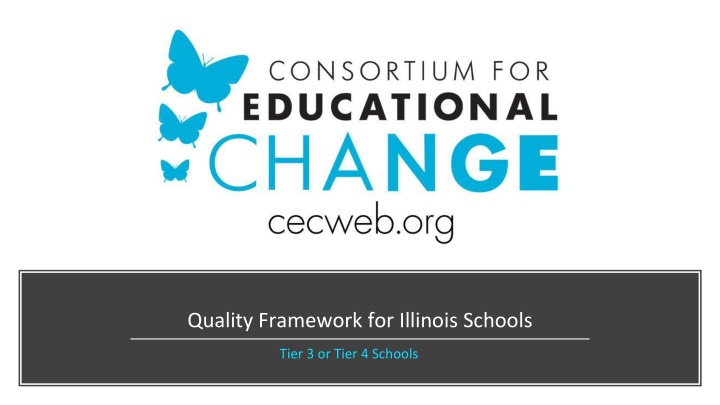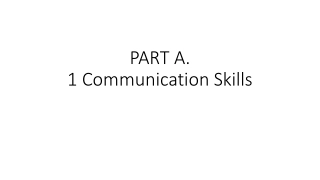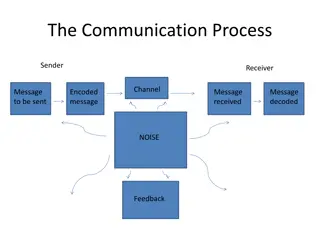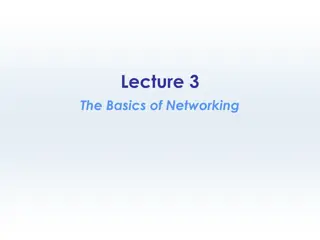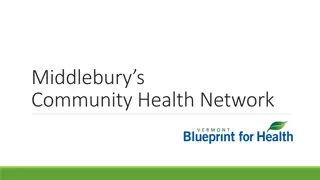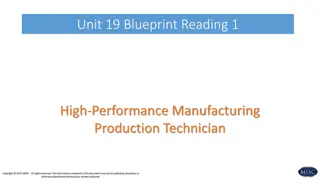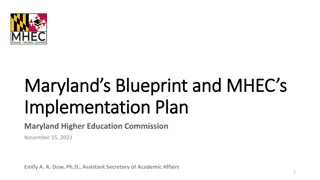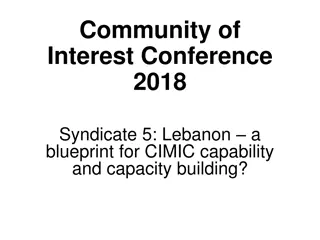Blueprint Communication: Basics and Methods
Blueprint Communication allows separate objects to interact, covering methods such as Direct Communication, Blueprint Interface, and Event Dispatchers. Learn how to effectively transmit data between objects using various communication types.
Download Presentation

Please find below an Image/Link to download the presentation.
The content on the website is provided AS IS for your information and personal use only. It may not be sold, licensed, or shared on other websites without obtaining consent from the author.If you encounter any issues during the download, it is possible that the publisher has removed the file from their server.
You are allowed to download the files provided on this website for personal or commercial use, subject to the condition that they are used lawfully. All files are the property of their respective owners.
The content on the website is provided AS IS for your information and personal use only. It may not be sold, licensed, or shared on other websites without obtaining consent from the author.
E N D
Presentation Transcript
Quality Framework for Illinois Schools Tier 3 or Tier 4 Schools
Seven IBAM Standards with Aligned Indicators Standard I: Continuous Improvement Standard II: Culture and Climate Standard III: Shared Leadership Standard IV: Governance, Management and Operations Standard V: Educator and Employee Quality Standard VI: Family and Community Engagement Standard VII: Student and Learning Development
Standard I Continuous Improvement In successful districts and schools, there is a collective commitment to collaboratively identify, plan, implement, monitor, evaluate, and communicate the changes necessary to continuously improve student learning for all students. Purpose setting questions: How do we embody collaborative problem solving? 1. How do we effectively plan for continuous improvement? 2. What evidence do we have supporting a continuous improvement model that provides equitable opportunities for all to learn? 3. What are the monitoring, accountability and follow-up measures established to address the opportunity gaps and achievement gaps that exist? 4.
SMART Goal Tree Diagram Goal Indicator Measures Indicator A Focused and Coherent Direction. The district leadership team establishes a coherent and collaborative approach for improving student performance based on the established vision/goals and implements a comprehensive district continuous improvement process. Standard I: Continuous Improvement Indicator Measures In successful districts and schools, there is a collective commitment to collaboratively identify, plan, implement, monitor, evaluate, and communicate the changes necessary to continuously improve student learning for all students. Indicator B- Processes and Structure The school(s) leadership team establishes a well-defined structure for building professional relationships and processes necessary to collaboratively engage all school-level stakeholders in actions to increase student learning through the implementation of a comprehensive school continuous improvement process. Indicator Measures Indicator C Monitoring for Results The district and school leadership teams collaboratively monitor changes in practice and implement adjustments, evaluate the results of student learning for all groups of students and communicate the progress to all stakeholders
Standard II Culture and Climate In order to ensure desired results of improved teaching and learning, successful districts and schools must cultivate safe and stabilized learning environments. Purpose setting questions: 1. How do we establish and communicate the vision for our district and schools? 2. What is the alignment between our district/school vision and our goals? 3. What evidence do we have supporting our vision for a safe learning environment? 4. How does our school culture provide support for effective and responsive instruction? 5. How does our district and school climate support all students and staff members? 6. is the evidence that the district/school create learning environments that are inclusive and responsive to all students?
SMART Goal Tree Diagram Goal Indicator Measures Indicator A Shared Vision and Goals The district and school(s) have aligned vision statements and goals that support a learning environment that is physically, socially, emotionally, and behaviorally safe and conducive to learning. Standard II: Culture and Climate In order to ensure desired results of improved teaching and learning, successful districts and schools must cultivate safe and stabilized learning environments. Indicator Measures Indicator B- High Expectations for All The school culture supports educators in practicing effective and responsive instruction to meet the needs of the whole child and promotes the celebration of district, school, and student improvement. Indicator Measures Indicator C Safe and Engaging Learning Community The district and school climate supports the whole child and well-being of all students and personnel, contributing to an engaging and inclusive learning community.
Standard III Shared Leadership In successful districts and schools, leaders create and sustain organizational direction, expectations, and a system that promotes excellence, efficiency, and leadership from within. Purpose setting questions: How do members of school staff perceive our learning environment? 1. What evidence do we have to support a positive and supportive learning environment? 2. How is student learning data used in the district and in schools? 3. How do students perceive their classroom learning environment? 4. At what level and in what ways are students involved in leadership opportunities? 5. If in a district represented by multiple races and ethnicity, what is the make up of students in various clubs, committees, etc. and is proportionate and representative of the student body, regardless of learner characteristics? 6. In what ways does the staff reflect and/or support the ethnic, linguistic, cultural and economic diversity represented by the students and community? 7.
SMART Goal Tree Diagram Indicator Goal Measures Indicator A Administrative Leadership The administration actively models and fosters a positive learning environment in which all staff members feel valued and are challenged to be engaged and grow professionally. Standard III: Leadership Indicator Measures In successful districts and schools, leaders create and sustain organizational direction, expectations, and a system that promotes excellence, efficiency, and leadership from within. Indicator B- District and School Level Teams The district and school level teams collaborate to continuously collect, analyze, and apply student learning data from a variety of sources, including comparison and trend data about student learning, instruction, program evaluation, organizational conditions, and fiscal resources that support student learning. Indicator Measures Indicator C Teacher Leadership The teachers actively model and foster a positive school environment in which educators and all students feel valued and are challenged to be engaged and grow. Indicator Measures Indicator C Student Leadership The students actively participate in leadership opportunities that develop self- direction and a sense of responsibility for improving self, school, and community
Standard IV Governance, Management, and Operations In successful districts and schools, efficient and effective governance policies and administrative procedures assure that personnel, fiscal resources, and data/technology systems promote and support student performance and school effectiveness. Purpose setting questions: What district/school policies, practices and procedures are in place to ensure the school s commitment to equity and diversity? 1. What is board policy and procedures relating to personnel recruitment, development, evaluation and retention? 2. What is board policy and procedures relating to equitable resource allocation? 3. How do the board and superintendent monitor continuous improvement? 4.
SMART Goal Tree Diagram Indicator Measures Goal Indicator A Students The district/school creates policies and procedures that school personnel implements and monitors to ensure an inclusive learning environment that decreases isolation, separation, and segregation for students that are diverse because of their race, culture, language, academic ability, physical ability, gender, socio-economic status, immigration status, social-emotional needs, sexual orientation, religious affiliation, etc. Standard IV: Governance, Management & Operations Indicator Measures Indicator B- Personnel The district has school board policies and administrative procedures that provide for a comprehensive approach to recruiting, evaluating, and sustaining highly qualified personnel. In successful districts and schools, efficient and effective governance policies and administrative procedures assure that personnel, fiscal resources, and data/technology systems promote and support student performance and school effectiveness. . Indicator Measures Indicator C Equitable Resource Distribution The school board and superintendent work collaboratively to identify and allocate/reallocate fiscal resources needed for effective implementation of a comprehensive system of continuous improvement; including qualified staff equitably and appropriately assigned; appropriate facilities and other environmental learning spaces; quality instructional technology and infrastructure; appropriate instructional materials and equipment, and all other instructional supports for learning that are also distributed in the manner required to allow all learners to achieve high academic expectations. Indicator Measures Indicator B- Data Collection and Technology Tools The school board and superintendent work collaboratively to monitor and evaluate the implementation of the continuous improvement process through an ongoing data collection system supported by an effective technology infrastructure; that effectively measures academic achievement, physical, social emotional, behavioral and other student outcomes for all its diverse learners.
Standard V Educator and Employee Quality In successful districts and schools, all personnel participate in processes of self- reflection, collaboration, and evaluation that lead to professional growth and development in order to create and maintain a high-quality learning community. Purpose setting questions: How do we structure professional learning opportunities for all staff members so that the needs of all diverse learners are met? 1. How do we determine what professional learning opportunities will be provided to staff members? 2. How do we evaluate our professional learning opportunities? 3. In what ways do we collaborate? 4. What is the focus of staff collaboration? 5. How do we evaluate our educational practice? 6.
SMART Goal Tree Diagram Indicator Measures Goal Indicator A: Professional Development All educators engage in continuous learning opportunities for professional growth designed to improve school and classroom practice as defined by the academic, physical, social, emotional, diverse, linguistic and behavioral programming needs. Standard V: Educator and Employee Quality Measures Indicator In successful districts and schools, all personnel participate in processes of self- reflection, collaboration, and evaluation that lead to professional growth and development in order to create and maintain a high-quality learning community. Indicator B Professional Collaboration All educators collaborate on the improvement of the learning environment through the study of relevant data, problem analysis, and the implementation of strategies that improve delivery of services in all schools of the district. Indicator Measures Indicator C Support Personnel Professional Development All support personnel engage in continuous learning opportunities for professional growth designed to improve professional performance. Measures Indicator Indicator D Evaluation, Feedback, and SupportAll personnel participate in a comprehensive evaluation process that utilizes multiple interactive communication tools to facilitate self-reflection and inform the process of professional growth.
Standard VI Family and Community Engagement In successful districts and schools, stakeholders have significant opportunities to develop, implement and plan parent involvement practices to have ongoing communication regarding student physical, social, emotional, behavioral (linguistic, if applicable), and academic growth. Purpose setting questions: 1. How does the district/school communicate with primary caregivers? (If multiple languages are present, do we communicate in those languages? 2. How are primary caregivers involved with the educational process? 3. How does the district/school communicate with community stakeholders? (If multiple languages are present, do we communicate in those languages? 4. How are community stakeholders involved with the educational process? 5. 5. How does the district/school collaborate with primary caregivers and community stakeholders?
SMART Goal Tree Diagram Goal Indicator Measures Standard VI: Family & Community Engagement Indicator A School-to-Home Connections District/school personnel and primary caregivers engage in regular communication to provide mutual supports and guidance between home and school for all aspects of student learning. Indicator Measures In successful districts and schools, stakeholders have significant opportunities to develop, implement and plan parent involvement practices to have ongoing communication regarding student physical, social, emotional, behavioral (linguistic, if applicable), and academic growth. Indicator B Student Personal Development The district and school leverage existing resources to provide a coordinated system of support for the whole child. Indicator Measures Indicator C Student Advocates Educators communicate regularly with primary caregivers and various community agencies and encourage them to participate as active partners in the development of the whole child. students and communicate the progress to all stakeholders
Standard VII Student and Learning Development In successful districts and schools, curriculum, instruction, and assessment are monitored and adjusted systematically in response to data from multiple assessments of student learning, an examination of professional practice, and analysis of learning conditions to continuously improve student growth. Purpose setting questions: How do districts/schools plan for instruction? (Do silos and/or cultural practices exist that unintentionally separate students and do not allow for access to the core curriculum? What evidence do districts/schools have for alignment of instruction (vertical, horizontal and with standards/frameworks)? Is there alignment between programs (Special education, English learners, etc.? What supports does a district/school provide for instructional planning? How does the district/school evaluate the effectiveness of our instructional environment? How does the district/school meet the needs of all students (ethnicity, linguistic ability, etc.)? How does the district/school s evaluation system support effective 1. 2. 3. 4. 5. 6.
SMART Goal Tree Diagram Indicator Measures Indicator A Instructional Planning and Preparation Instructional staff and district/school leadership ensure that instructional planning is based on the district s curriculum as aligned with established learning standards and as supported by appropriate resources, funding sources, program collaboration and professional development. Goal Standard VII: Student and Learning Development Indicator Measures Indicator B Classroom Environment Instructional staff and district/school leadership collaborate to provide an instructional environment that equitably engages all students regardless of characteristics, home language, and educational needs by using effective, varied, and research-based practices to meet the academic and social-emotional needs of the whole child and empower students to share responsibility for their learning. . In successful districts and schools, curriculum, instruction, and assessment are monitored and adjusted systematically in response to data from multiple assessments of student learning, an examination of professional practice, and analysis of learning conditions to continuously improve student growth. Indicator Measures Indicator C Delivery of Instruction Instructional staff, supported by district/school leadership, utilize instruction, evaluation, and assessment strategies that are informed by research to continuously monitor instruction, adjusting to the needs of the whole child. Indicator Measures Indicator D Professional ResponsibilitiesInstructional staff and district/school leadership collaboratively monitor the teacher evaluation system to ensure consistent implementation that supports the work of the school/district to improve teaching and learning
Exemplary Tier I Tier II Commendable Tier III Tier IV Lowest-performing Under-performing
